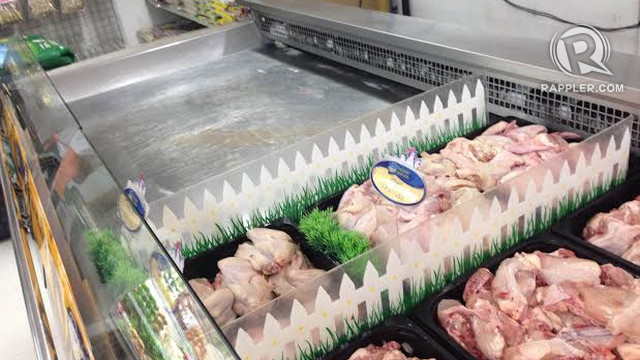SUMMARY
This is AI generated summarization, which may have errors. For context, always refer to the full article.

MANILA, Philippines – After Jollibee customers grumbled about the unavailability of Chicken Joy for the past weeks, the Department of Agriculture (DA) clarified that there is no shortage of chicken in the country.
“We are producing chicken daily and it only takes 31 days for poultry to be ready so there really is no reason for a shortage in the supply of chicken,” said DA Undersecretary for Livestock Jose Reaño.
The country still has 3 million kilos of chicken in its inventory making shortage a remote possibility, he added.
Jollibee Foods Corporation itself clarified that the limited supply of Chicken Joy and other Jollibee bestselling dishes was due to a systems glitch as the company undertook a “major systems upgrade” beginning August 1.
“Unfortunately, this change in system has initially affected the delivery schedule of raw materials from our commissary to select stores,” said Jollibee vice president for marketing Harvey Ong in a statement.
But a shortage in chicken supply has also been observed in groceries in Metro Manila.
Two groceries visited by Rappler (Save More Katipunan Branch and Shoppersville, also in Katipunan Avenue, Quezon City) reported markedly reduced delivery of whole chicken and chicken parts since July.
These stores are supplied by SM Bonus, San Miguel Corporation and Bounty Fresh who all source their poultry from local farms. In Shoppersville, price for chicken has even increased by P3 (US$0.07).
Effects of Typhoon Glenda?
Might the limited chicken supply be the effect of Typhoon Glenda (international name Rammasun)?
The storm battered parts of Luzon and Visayas causing P8.3 billion ($192 million) in damage to agriculture and fisheries. Of this, P13.4 million ($310,000) was the damage to livestock.
Reaño confirmed that Typhoon Glenda affected the supply of chicken from Southern Luzon. But Region 3 or Central Luzon, the country’s top chicken-producing region, was spared.
Local poultry raisers are producing in full capacity since they now enjoy better prices compared to the same period last year, he said. Last year, depressed farmgate prices forced many raisers to reduce their layers of production to recover losses.
Farmgate prices if chicken are now placed at P100 ($2.27) per kilogram of liveweight compared to P45 ($1.03) kilogram per liveweight in about the same time last year.
“The number of parent stocks in farms is now growing so we are not worried about shortage. If there will be a supply gap, it will most likely be because of distribution concerns,” said Reano.
He said supply is expected to be less tight by November in time for the holiday season.
The greater Metro Manila consumes 20 million kilos of chicken every month, a demand that is met by both local and imported supply, he said.
“Sometimes, there is just late arrival of imports because the shipments cannot easily be unloaded from ports because of congestion and the truck ban,” he said.
“We have a tight supply. This means the supply just meets the demand with very little surplus.”
Around 700,000 kilos of imported chicken are set to arrive in the country until September.
Boosting local production
To help local poultry producers still reeling from the typhoon, the DA and LandBank are ready to give them loans at low interest rates so they can start repairing their houses and chicken coops.
The DA also plans to increase the number of chicken processing plants and slaughterhouses in order to ensure better local supply of chicken.
Far from lacking chicken, the country actually supplies other countries with chicken, said Reaño.
The DA estimated that 90% of chicken yakitori consumed in Japan comes from the Philippines. The country also exports chicken to South Korea and the United Arab Emirates. – With reports from Pia Ranada/Rappler.com
Add a comment
How does this make you feel?
There are no comments yet. Add your comment to start the conversation.